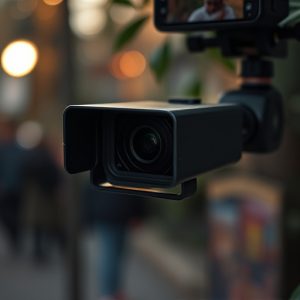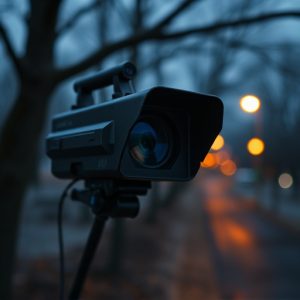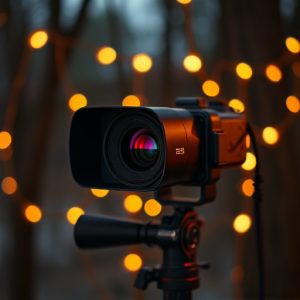Detecting Microphone Bugs: Advanced Techniques with Wireless Night Vision Cameras
Wireless Night Vision Security Cameras Indoors have become essential tools in modern privacy and sec…….
Wireless Night Vision Security Cameras Indoors have become essential tools in modern privacy and security measures, addressing the growing concern of covert listening devices. These cameras utilize advanced thermal imaging and real-time video feeds to detect hidden microphones by analyzing heat signatures and subtle noises. With high-resolution imaging, remote access, and noise-cancelling features, they provide a comprehensive solution for neutralizing bugs in sensitive environments like homes and offices, ensuring clear communication and enhanced security.
“Uncover hidden threats with microphone bug sweeping detection techniques, a crucial aspect of home security. This comprehensive guide explores the basics of identifying and eliminating covert listening devices, focusing on advanced methods that utilize wireless night vision security cameras indoors. Learn how these tools can enhance your privacy by detecting bugs in unexpected places. Additionally, discover prevention strategies to safeguard your home from microphone interference, ensuring a peaceful and secure living environment.”
- Understanding Microphone Bug Sweeping: The Basics
- Wireless Night Vision Security Cameras as Tools for Detection
- Advanced Techniques to Identify Hidden Bugs
- Preventing and Mitigating Microphone Interference in Your Home
Understanding Microphone Bug Sweeping: The Basics
Microphone bug sweeping, also known as audio surveillance or eavesdropping detection, is a critical process aimed at identifying hidden microphones used for unauthorized listening devices. In today’s digital age, where wireless night vision security cameras indoors are becoming increasingly common, the risk of covert audio monitoring also grows. This technique involves specialized equipment and expertise to detect minute sounds that may indicate the presence of bugs or hidden recording devices.
By using advanced listening devices and signal processing technologies, professionals can scan for unusual audio signals, frequency patterns, or faint noises that could suggest a bug’s activity. The goal is to ensure privacy and security by identifying and neutralizing these hidden microphones, especially in sensitive indoor environments like homes, offices, or conference rooms equipped with wireless night vision security cameras.
Wireless Night Vision Security Cameras as Tools for Detection
Wireless Night Vision Security Cameras have emerged as valuable tools in the intricate process of bug sweeping, particularly for detecting hidden microphones indoors. Their advanced capabilities offer a unique advantage in searching for unwanted listeners who might be lurking within residential or commercial spaces. With real-time video feed and thermal imaging technology, these cameras can detect heat signatures, making them effective in identifying electronic devices operating at subtle temperatures, such as covert microphones.
The use of Wireless Night Vision Security Cameras indoors allows for a thorough inspection of hard-to-reach areas, corners, and crevices where hidden microphones could be strategically placed. The high-resolution images and night vision capabilities enable security professionals to scrutinize every detail, ensuring that no electronic intruder goes unnoticed. By integrating these cameras into bug sweeping protocols, individuals and organizations can enhance their security measures and maintain a safe environment free from unwanted surveillance.
Advanced Techniques to Identify Hidden Bugs
In today’s digital age, where privacy and security are paramount, advanced techniques to identify hidden bugs have evolved significantly. One powerful tool that aids in this process is the integration of wireless night vision security cameras indoors. These cameras not only offer enhanced visibility but also provide a continuous feed that can be meticulously analyzed for any suspicious activity or unusual noises—potential indicators of hidden microphones.
By utilizing high-resolution imaging and thermal sensing capabilities, wireless night vision security cameras can capture detailed images even in complete darkness, making it easier to detect subtle anomalies. Moreover, the ability to remotely access and monitor these feeds allows for a more comprehensive sweep, ensuring that every corner of your indoor space is scrutinized. This proactive approach to bug sweeping is particularly crucial in sensitive environments where the risk of unauthorized listening devices is high.
Preventing and Mitigating Microphone Interference in Your Home
Preventing and mitigating microphone interference in your home is crucial for maintaining a clear and secure environment, especially with the prevalence of smart home devices and wireless night vision security cameras indoors. A key step is to ensure proper placement of these devices; keep them away from heating vents, large metal objects, and other potential sources of electromagnetic interference that could disrupt their functionality. Regularly updating firmware and using high-quality cables can also help reduce glitches caused by signal degradation.
Additionally, utilizing noise-cancelling features available in many modern smart speakers or investing in dedicated microphone filters can significantly minimize background noise and external distractions. For wireless night vision security cameras, consider using RF (radio frequency) shielding materials to block unwanted signals that might interfere with their operation. By implementing these simple yet effective measures, you can create a quieter, more reliable environment for your home technology, ensuring clear communication and surveillance.
Microphone bug sweeping has become a growing concern in today’s digital age. By understanding the basics and employing advanced techniques, homeowners can effectively detect hidden bugs. Utilizing wireless night vision security cameras indoors offers a powerful tool for continuous monitoring, enhancing your home’s security. Additionally, implementing preventive measures can significantly mitigate microphone interference, ensuring peace of mind and a safe living environment.


